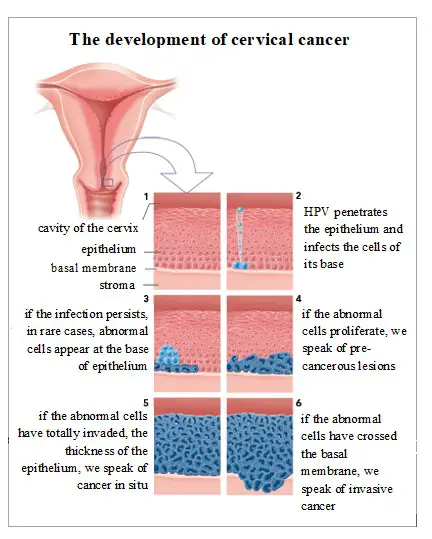Stress and cervical cancer happen to be some of the most common conditions in women.
Table of Contents
What is cervical cancer?
Cervical cancer is a type of cancer characterised by changes in the cells in the cervix of women; this is the part of the female body that links the vagina to the uterus. If untreated, cervical cancer can spread to other parts of the body, especially the vagina, bladder and liver. The most widely reported cause of cervical cancer is an infection with the human papillomavirus (HPV). However, smoking, poor diet, pregnancy, and a declining immune system are significant contributors to cervical cancer.
How common is cervical cancer?
Cervical cancer is a very common illness for women worldwide, but its occurrence in the modern world is increasing rapidly. In the United States, for instance, there are estimated to be five new cases of the disease every day.
Do you know that cervical cancer, also called cancer of the cervix, is the second most common type of cancer in women globally? There are estimated 530,000 new cases and 270,000 deaths annually, with the majority (85% or more) occurring in Africa, Asia and Latin America.
The number of women who develop this type of cancer is constantly on the rise and the number of women likely to die from it is increasing at a higher rate than ever before. Women need to be supported to start learning how to cope with these life changing events as soon as they can to avoid the extreme emotional experience that accompany them.
What are the signs of cervical cancer?
 Women who have cervical cancer often experience a combination of various signs. These include light bleeding or blood sports soon after a menstrual period. Sometimes the woman may experience prolonged heavy bleeding during menstruation.
Women who have cervical cancer often experience a combination of various signs. These include light bleeding or blood sports soon after a menstrual period. Sometimes the woman may experience prolonged heavy bleeding during menstruation.
Others may feel significant pain during intercourse and may experience some bleeding after intercourse. In women who have completed menopause, bleeding can suddenly occur; this is unusual. Some women may find urinating after sexual intercourse painful because of vaginal dryness. Overall, there can be continuous pain around the pelvis and the back.
How many types of cervical cancer are there?
There are two main types of cervical cancer. The most widespread is the squamous cell carcinoma (SCC). The main feature of this type of cervical cancer is that it develops from the exocervix which is the shielding mucous covering on the peripheral of the cervix.
The second type of cervical cancer is the adenocarcinoma. This type contains cells that develop from the gland cells at the opening of the uterus (endocervix).
How long does it take cervical cancer to develop?
Following the infection with HPV, cervical cancer can develop over a 10 to 15-year period. The development of cervical cancer can be quicker for women with a Once infected with HPV, it can take 15 to 20 years for cervical cancer to develop, or 5 to 10 years if you have a declining immune system. The progression from HPV to cervical cancer can be hastened in heavy smokers and in women with other sexually transmitted infections like herpes simplex or gonorrhoea.

How to prevent cervical cancer?
Cervical cancer is treatable if diagnosed at an early stage.
1. Undergo routine Pap tests
A woman must endeavour to have Pap tests, also called smear tests, every three years, to determine if there are unusual changes in cells of the cervix. This exercise is essential to in preventing cervical cancer. It is advisable to commence smears by the age of 21 years. Pap tests should accompany HPV testing. Negative results on both tests are excellent signs.
2. Keep up on any abnormal Pap smears.
If the pap test reveals an infection, it is vital that this infection should be treated immediately, with follow-up pap test afterwards. With a positive pap test result, your doctor may wish to perform an HPV DNA test to identify if HPV is present in your cervix.
3. Use cervical cancer vaccination.
Vaccine is an important cervical cancer prevention method. Make sure that you get vaccinated against HPV. Talk to your doctor about this vaccination. Using condom always during sexual intercourse can also reduce the risk of HPV infection and associated diseases.
4. Engage in safe sex practice.
Having multiple partners can heighten the risk of HPV transmission and, therefore, cervical cancer. Abstain from unprotected sexual intercourse with an infected person. While condoms can reduce the risk of HPV transmission, they don’t offer full protection against HPV. So, a combination of having a single partner, condom use and HPV vaccination is crucial for the prevention of cervical cancer.
5. If you are a smoker, stop smoking.
Smoking can double the risk of developing cervical cancer. Some toxic products in tobacco can destroy the DNA of some cells in the cervix, thereby contributing to the development and proliferation of cervical cancer cells.
